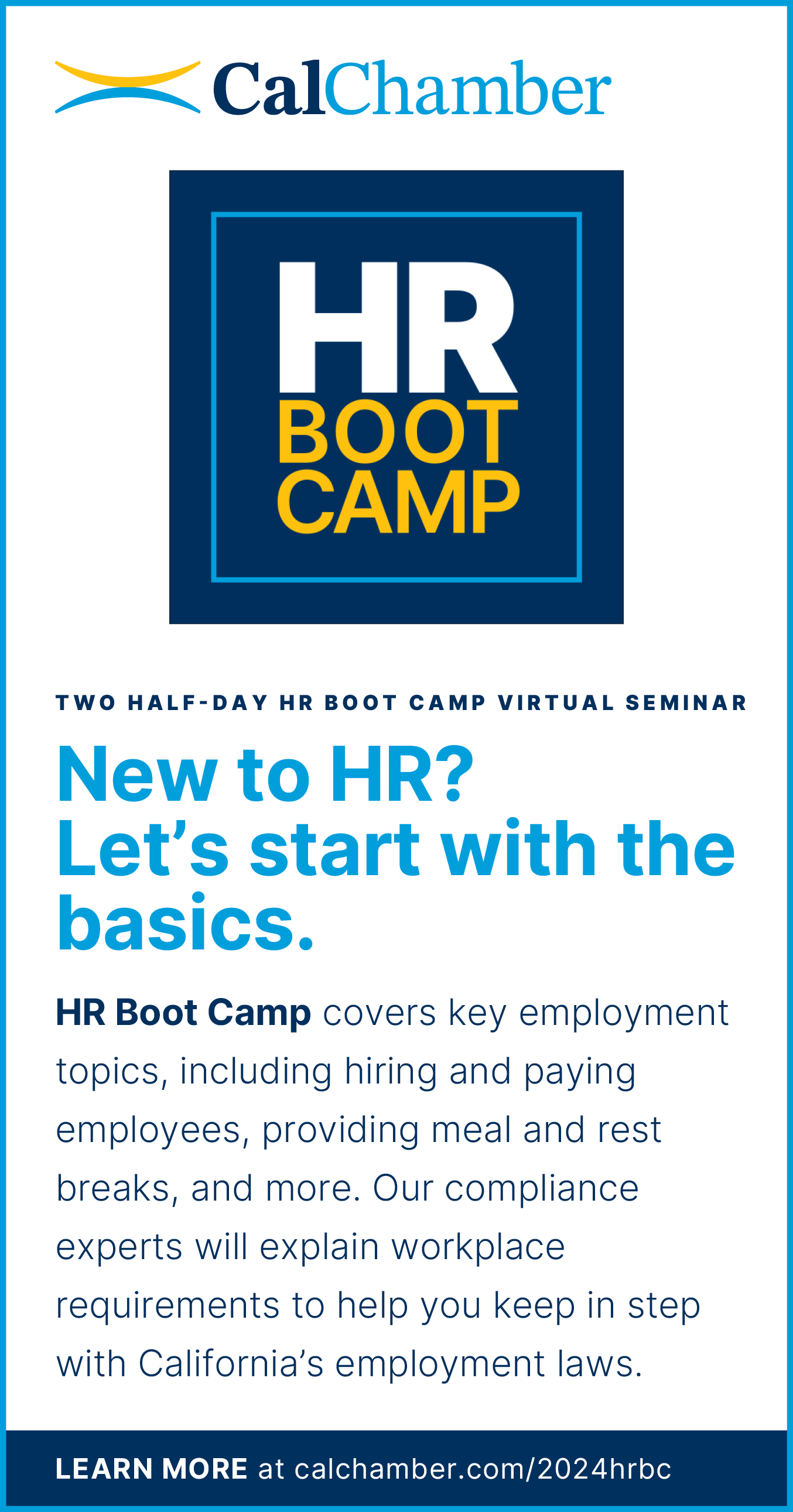Creating business leadership and entrepreneurial opportunities for women in the post-COVID-19 economy was the topic of a May 6 virtual event co-hosted by the California Chamber of Commerce and the Consulate General of México, Sacramento in honor of Mexico-California Advocacy Week.
The “Women’s Role in California’s Economic Recovery” webinar was moderated by Ambassador Liliana Ferrer, consul general of Mexico in Sacramento, who presented brief remarks on the importance of California and Mexico’s trade relationship, and addressed some of the impacts the COVID-19 pandemic has had on working women. CalChamber Vice President of International Affairs Susanne Stirling welcomed the webinar’s featured speakers:
• Luz María de la Mora, undersecretary for foreign trade, Mexico Secretariat of Economy, who examined some of the ways that women entrepreneurs can access the benefits of the U.S.-Mexico-Canada Agreement (USMCA); and
• Dee Dee Myers, senior adviser and director, Governor’s Office of Business and Economic Development (GO-Biz), who discussed the measures California’s government has taken to include women in COVID-19 recovery programs and initiatives.



USMCA: Giving Women Access to Foreign Access
The COVID-19 pandemic has disproportionately impacted women more than men, and figures show that women most often had to leave their jobs or work less in order to meet the family demands that arose from school closures. Even in normal economic times, 81% of men with children remained employed, while only 59% of women with children stayed in the workplace in California, Ferrer said in kicking off the webinar.
“Women’s inclusion in economic recovery efforts is crucial to shrinking the gap in unemployment, which spiked more in women than men through the last year…and in this regard, the USMCA’s provisions will come as a great toolbox to address this goal,” Ferrer told attendees.
In Mexico in particular, the pandemic has disproportionally affected women, as job losses for women were more than double that of men, De la Mora said.
She highlighted figures by the Global Entrepreneurship Monitor that revealed that if women could participate in the economy on equal footing, world gross domestic product (GDP) could increase by 26%, or the equivalent of $12 trillion by 2025.
Lack of entrepreneurial rates among women are not due to a lack of will — De la Mora points out that women work every day, but they don’t get any payment or benefits, such as social security. Moreover, women are often the first to be fired in a company or the first to have a deduction in pay.
This reality needs to be addressed, she stresses, and one way to create opportunities for women is in private-public partnerships. The USMCA contains a number of provisions to help sectors traditionally held by women participate in international trade.
Via a PowerPoint presentation, De la Mora reviewed the provisions within the USMCA that offered the most benefit to women in business. Some of the provisions she highlighted include:
• Chapter 6: provides access to preferential tariff treatment for folk goods that are produced in an artisanal way. This sector is dominated by women, who often are the breadwinners in their communities, De la Mora said;
• Chapter 7: facilitates and expedites the clearance of goods in customs and makes administrative processes transparent. Another key provision, Chapter 7 reduces costs to businesswomen derived from simplified customs operations, and facilitates the ability for women to get involved in international trade;
• Chapter 15: allows the export of services without having to establish an office in another country, and the export of services is exempt from value-added tax (VAT). The provision is important because two-thirds of women-owned businesses are in the service sector, including hospitality, education, food, tourism and commerce industries; and
• Chapter 19: This provision, De la Mora said, is one of the most important contributions the USMCA makes to expanding digital integration in North America. It generates development opportunities, especially for small and mid-size enterprises, and promotes the development of computer platforms that allow the development and growth of companies.
The other provisions De la Mora discussed were: Chapter 20, which deals with intellectual property; Chapter 23, which addresses labor laws; Chapter 25, which deals with small and medium-sized enterprises; and Chapter 26, which pertains to business competitiveness.
California’s Efforts in COVID-19 Economic Recovery
Before the COVID-19 pandemic, women’s participation in the California workforce exceeded men’s, with almost 51% of women working.
“That is no longer true,” Myers said.
Women have not only disproportionally lost jobs, but income as well, she adds.
Governor Gavin Newsom’s strategy to combat the pandemic’s effect on women is a multi-faceted approach that Myers called the “three pillars of economic recovery.”
The first pillar is distributing vaccines so that women and their families are protected from the COVID-19 virus. Officials are also focusing on distributing vaccines to underserved and hard-hit communities.
The second pillar is creating business support programs, in particular for small companies and women-owned businesses.
“[Small businesses] are the pillar of our economy and our communities. More than 99% of private sector jobs come from our small business communities in California and they’ve been very impacted,” she said.
The administration has created a number of programs that provide direct financial support such as:
• A $2.5 billion small business grant program, which focuses on many industries that impact women and underserved communities; [Governor Gavin Newsom proposed adding another $1.5 billion to this program. See the Alert story covering this addition here.]
• Bringing tax conformity to Paycheck Protection Program (PPP) loans, which translates to $6.2 million in tax relief; and
• Offering low-cost loans for businesses. A problem faced by many disadvantaged community businesses during the pandemic has been a lack of access to capital, so the administration created a program to help companies obtain low-cost loans. A technical assistance network was also created to ensure that women and business owners from disadvantaged communities get the information they need.
The last pillar of the recovery strategy is education, which includes a focus on higher education, but also targets childcare, pre-kindergarten and kindergarten. The pandemic has been hard on children and creating programs to get kids back to school will help women get back into the workforce, Myers said.
To view the full webinar, visit vimeo.com/552173095/74dfa39e32.



